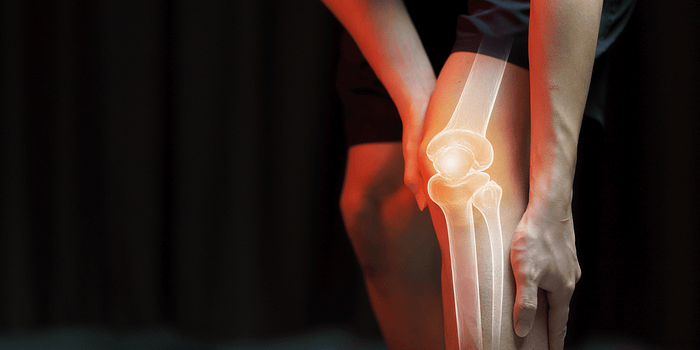Ultrasound-Guided Cortisone Injections for Iliotibial Band Syndrome
Introduction
Iliotibial Band Syndrome (ITBS) is a common condition that causes pain on the outer side of the knee, particularly in athletes and individuals who engage in repetitive lower limb activities such as running and cycling. ITBS is often caused by excessive friction between the iliotibial band and the lateral femoral condyle, leading to inflammation and discomfort.
Ultrasound-guided cortisone injections may be considered as part of a management approach for ITBS, aiming to target inflammation and reduce pain in the affected area. This blog explores ITBS in detail, covering its anatomy, pathology, symptoms, causes, diagnostic methods, and treatment options, with a focus on the role of cortisone injections.

Anatomy of the Iliotibial Band
The iliotibial band (ITB) is a thick band of connective tissue that runs along the outer side of the thigh, extending from the hip to the shin. It plays a key role in stabilising the knee during movement.
Key Structures Involved in ITBS
- Iliotibial Band (ITB): A dense fibrous band originating from the tensor fasciae latae (TFL) muscle and gluteus maximus in the pelvis, extending down to attach to the lateral tibia.
- Lateral Femoral Condyle: A bony prominence on the outer side of the lower femur where the ITB can experience friction.
- Bursa: A small fluid-filled sac that sits between the ITB and lateral femoral condyle, reducing friction.
Function of the Iliotibial Band
- Provides lateral stability to the knee.
- Assists in hip and knee movements.
- Acts as a shock absorber during weight-bearing activities.
Pathology of Iliotibial Band Syndrome
Iliotibial Band Syndrome occurs when repetitive knee flexion and extension cause excessive friction between the ITB and the lateral femoral condyle. This can lead to irritation, inflammation, and discomfort, particularly in physically active individuals.
Stages of ITBS Development
- Irritation of the ITB: Repeated movement leads to increased tension in the ITB.
- Inflammation of the Bursa: The bursa between the ITB and femoral condyle becomes inflamed.
- Chronic Thickening: Prolonged irritation may result in thickening of the ITB, worsening symptoms over time.
Causes and Risk Factors
Repetitive Movements
- Running: Especially downhill running or excessive mileage.
- Cycling: Poor bike fit or improper pedalling mechanics.
- Rowing and Hiking: Prolonged knee flexion under load.
Biomechanical Factors
- Tight Iliotibial Band: Increased tension in the ITB can worsen friction.
- Weak Hip Muscles: Reduced gluteal strength can cause abnormal knee alignment.
- Leg Length Discrepancy: Uneven leg lengths may contribute to excessive ITB stress.
Training Errors
- Sudden Increase in Activity Levels: Rapidly increasing intensity or duration of training.
- Inadequate Rest Periods: Overuse without recovery leads to cumulative irritation.
- Running on Sloped Surfaces: Uneven terrain can alter knee biomechanics.
Symptoms of Iliotibial Band Syndrome
- Pain on the Outer Side of the Knee: Typically worsens with activity.
- Tenderness Over the Lateral Femoral Condyle: Pain may be felt when pressing the outer knee.
- Clicking or Snapping Sensation: Due to the ITB moving over the femoral condyle.
- Pain During Running or Cycling: Particularly noticeable in long-distance runners.
- Discomfort with Knee Flexion and Extension: Pain may worsen when descending stairs or hills.
Diagnosis of Iliotibial Band Syndrome
Clinical Assessment
A clinician may evaluate:
- Tenderness along the ITB.
- Pain when applying pressure to the lateral femoral condyle.
- Gait and running mechanics.
- Hip and knee muscle strength.
Imaging Studies
- Ultrasound: Can assess inflammation and thickening of the ITB.
Management of Iliotibial Band Syndrome
Conservative Management
- Activity Modification: Reducing activities that exacerbate symptoms.
- Stretching Exercises: Improving flexibility of the ITB and surrounding muscles.
- Foam Rolling: Helps reduce tension in the ITB.
- Ice Therapy: Used to manage inflammation and pain.
- Pain Medication: Non-steroidal anti-inflammatory drugs (NSAIDs) may be recommended.
Ultrasound-Guided Cortisone Injections for Iliotibial Band Syndrome
Role of Cortisone Injections
Cortisone injections may be considered for individuals with persistent pain that does not respond to conservative management. These injections target inflammation and may provide relief by reducing swelling around the ITB and lateral femoral condyle.
Mechanism of Action
Corticosteroids work by:
- Reducing Inflammation: Suppressing inflammatory mediators within the affected area.
- Modulating Immune Response: Preventing excessive inflammatory cell activity.
- Altering Pain Signalling: Decreasing sensitivity of pain receptors.
Benefits of Ultrasound Guidance
- Precision: Ensures accurate placement of the injection.
- Minimised Risk of Complications: Reduces the likelihood of tissue damage.
- Enhanced Effectiveness: Ensures medication is delivered to the correct site.
Procedure for Ultrasound-Guided Cortisone Injections
- Patient Positioning: The patient is positioned to allow clear access to the lateral knee.
- Ultrasound Imaging: The clinician visualises the ITB and surrounding structures.
- Skin Preparation: The injection site is cleaned using an antiseptic solution.
- Local Anaesthetic: A numbing agent is applied to minimise discomfort.
- Cortisone Injection: The medication is administered under real-time ultrasound guidance.
- Post-Procedure Monitoring: The patient is observed for a short period before discharge.
Rehabilitation and Recovery
Post-Injection Care
- Avoid High-Impact Activities: Rest for 48 hours post-injection.
- Gradual Return to Activity: Strengthening and mobility exercises should be reintroduced slowly.
Expected Duration of Relief
- The effects of cortisone injections can vary, with some individuals experiencing symptom relief for several weeks to months.
Why Choose Alton Pain Clinic for Iliotibial Band Syndrome Treatment?
At Alton Pain Clinic, we offer ultrasound-guided cortisone injections tailored to each patient’s needs. Our clinicians utilise advanced imaging techniques to ensure precision, patient comfort, and an evidence-based approach to pain management.
Conclusion
Iliotibial Band Syndrome is a common overuse injury that can cause significant discomfort, particularly in physically active individuals. Ultrasound-guided cortisone injections may be considered for individuals with persistent symptoms, targeting inflammation and reducing pain. At Alton Pain Clinic, our clinicians use state-of-the-art imaging techniques to ensure precise injection delivery, supporting patient care and comfort.

Comments
Post a Comment